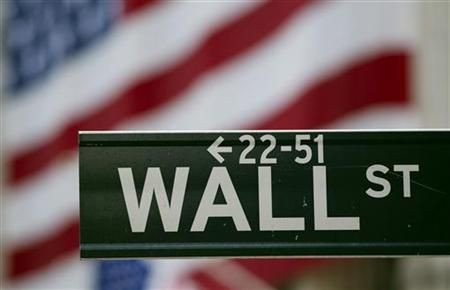Dealers See Greater Chance of Recession, QE3

Wall Street economists see odds of around one-in-three the United States will slip back into recession, heightening expectations the Federal Reserve will launch another round of unconventional credit easing, a Reuters poll showed on Tuesday.
In the wake of a stock market rout and U.S. credit ratings downgrade, some believe the central bank will not be able to wait until its annual conference at Jackson Hole, Wyo., later this month before announcing the next round of easing.
"It depends on if the markets melt down before then," said Julia Coronado, chief economist at BNP Paribas in New York.
She said the Fed's next announcement could be: "More QE, possibly coordinated with other central banks. You would coordinate a policy response to market turmoil."
It was at the Jackson Hole meeting last year that Fed chief Ben Bernanke hinted at what became its recent Treasury-buying program, which ended in June. There is already speculation in the bond market that it could do so again.
The median percent chance the dealers gave of a third round of quantitative easing by the Fed within the next six months rose from 27.5 percent on Friday to 37.5 percent on Tuesday.
The poll was conducted after the release of the latest Federal Open Market Committee statement, at the end of the FOMC's meeting on Tuesday. Nineteen out of the 20 primary dealers, the securities firms authorized to deal directly with the Fed to help implement monetary policy, responded to the poll.
The FOMC delivered Tuesday's statement during a moment of high tension. Financial markets have been reeling for a week after a bitter fight between Democrats and Republicans in Washington over whether to raise the U.S. legal borrowing limit and how to reduce the budget deficit.
Once a deal was struck last Tuesday, focus turned to Standard & Poor's, which had warned it would downgrade the U.S. credit rating if the deficit reduction deal wasn't sound enough. S&P lowered the U.S. rating to AA-plus from AAA late on Friday, sending the stock market into a tailspin and causing a sharp rally in the Treasury market.
The market reaction prompted economists at large Wall Street firms to reshape expectations, shifting forecasts for growth and the probability of another QE program in a mere three days.
"These numbers provide a placeholder for the second half but it really may be day to day," said Robert DiClemente, director of economic and market analysis at Citigroup in New York, referring to his updated forecast for GDP growth in 2011.
Their median forecast for annualized year over year GDP growth fell to 1.7 percent from 1.8 percent in a reading by Reuters taken on Friday, after the Labor Department announced that U.S. non-farm payrolls rose by a bigger-than-expected 117,000 jobs in July.
Eight out of eleven economists who offered thoughts on what Federal Reserve Chairman Ben Bernanke could reveal during the Aug 26 Jackson Hole Fed conference said they would be watching for more details on what QE3 could look like.
"We're likely to find out more on the policy options that the Fed has," said Kevin Cummins, economist at UBS.
The median percent chance that the U.S. would slip back into a recession within the next year rose to 30 percent from 15 percent on Nov 5, the last time Reuters asked primary dealers the question.
Two economists thought the Fed would have a harder time implementing QE3 since the latest FOMC decision came with dissent from three members of the committee.
"I suspect he's going to have a bit of a tougher sell on QE3 this time because you have three dissents-it's going to take time to perhaps build up a consensus," said Gary Bigg, economist at Bank of America Merrill Lynch in New York.
Two others said the Fed might be forced to announce QE3 even before the Jackson Hole conference, if financial market conditions deteriorated enough.
© Copyright Thomson Reuters 2024. All rights reserved.




















